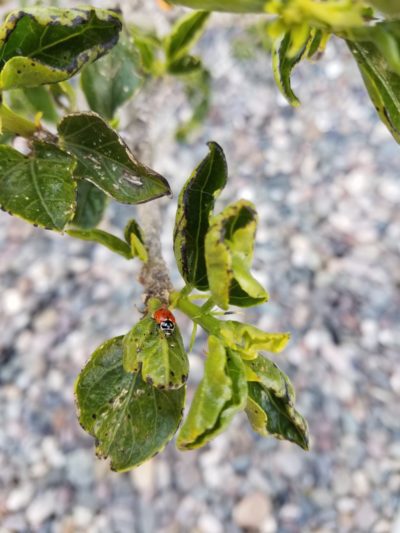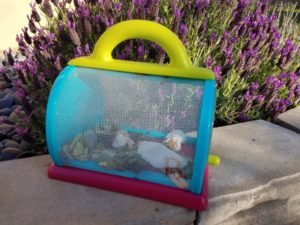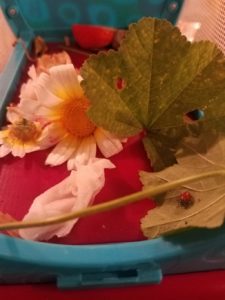It began with a Facebook post.
I was casually scrolling through my News Feed during my evening screen time. My daughter peered over my shoulder at the images my friend had shared of her 3 year-old-son. He was releasing ladybugs from a container into their backyard garden. As my daughter saw the mass quantity of ladybugs in a container, she made it our mission to get some too.
Until seeing my friend’s post, I had no idea that you could even buy ladybugs.
It turns out, containers of ladybugs are sold at select local garden centers. It took a few phone calls to different Dixieline stores, but we at last found a location that had them in stock. The next day, we headed to our destination.
Dixieline was the site of magical beginnings.
Tucked into a small refrigerator in their Garden Center to keep them sleepy and cool, I found myself purchasing a large quantity of ladybugs for $14. I intended to release a good amount of them into the yard to do what we needed them to do – eat the aphids invading our garden! I also knew that my daughter was going to “need” to keep some of them as pets. The ladybugs in the container were nestled between wood shavings and lacewings to keep them fed until their release. Ladybugs not only eat aphids, they eat other problematic bugs like white flies, mites, and scale insects.

Wondering how to be a good ladybug keeper/help your child become one?
Our purchase of the ladybugs was a bit spontaneous, and I wish I had been a bit more prepared to keep them as “pets.” Thankfully, Google made me a pro in no time.
Here are some tips I learned along the way:
- Buy or make a good home for the ladybugs. I found a good critter case on Amazon last minute but had to wait for it to arrive. When I checked local inventory at Target and Walmart, I was unable to find any in store. A quick search on Amazon using key phrases like “critter case” or “ladybug house” will find a suitable home. The one we found also came with a magnifying glass, large tweezers, and a magnifying specimen container. If you are making a house, aim for a 4 x 7 inch space and be sure there are breathing holes.

- Store them in a cool, dark place until you are ready to release! It is recommended to set the ladybugs free in the garden at dusk. They are less active at that time, thus increasing the likelihood that they will stay in your yard versus flying elsewhere. We have rose and hibiscus plants in our backyard. With aphids on their leaves, they made the perfect sites for setting the ladybugs free, which we did at sundown.
- Keep them hydrated! I accomplish this by simply wetting a small piece of paper towel or cotton ball and placing it in their home. I replace it with a new one daily. Ladybugs can easily extract water the water they need from these. Placing a bottle cap or something of the like with standing water may cause drowning.
- Feed them! We’ve tried a few different things in addition to doing daily backyard searches for leaves covered in aphids. Ladybugs like honey, but be sure to spread only a thin amount that they won’t get stuck in! They also enjoyed a slice of watermelon from the portion closer to the rind. We have given them sliced strawberry and water soaked raisins to keep a varied diet.

My daughter has taken great pride in being responsible for these cute little critters. We still have a handful as pets, over three weeks later. Ladybugs are regularly spotted in our yard. Knowing that many of the ladybugs have helped to keep our garden plants happier and healthier has made it a fun and worthwhile experience for the whole family!


















